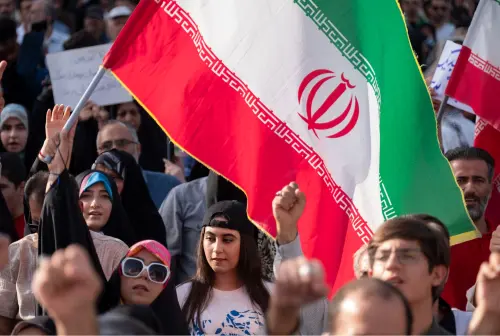Two weeks ago a dirty bomb detonated in Seattle, and over the course of a week, patients poured into Chicago hospitals, sick with plague.
The dirty bomb used conventional explosives to spread radioactive materials, inflicting public fear and economic damage without causing massive destruction.
The plague attack strained the public health system, but was effectively countered with antibiotics. Most likely, few people will die.
All this, of course, was simulated—it was part of TOPOFF 2, billed by the Department of Homeland Security as the nation’s largest ever exercise in combating terrorism with weapons of mass destruction (WMD).
And therein lies the problem: Though dirty bombs or plague would wreak havoc, they are not weapons of mass destruction.
By continuing to label so many weapons as WMD, the government and the media are propagating unfounded fears that will produce much of an attack’s impact.
A dirty bomb is unlikely to kill anyone who wasn’t hit by the initial conventional blast.
Depending on the bomb’s details, it could contaminate anywhere from a few square meters to hundreds of city blocks.
And plague, while able to kill in vast numbers if left untreated, can be halted by a seven-day course of antibiotics.
Its impact might be much like that of the fall 2001 anthrax attacks, which had the potential for mass death, but were countered quite easily.
These attacks, though, share a common feature: Their greatest immediate impact would likely be the ensuing chaos as people’s irrational fears of radiation and disease took hold.
Anything we can do to lessen these fears will make disaster response immeasurably easier; but conversely, anything we do to inflame them might come back to hurt us.
TOPOFF is not the only time high-level administration officials have wrongly described weapons of mass destruction. The most egregious errors have come in describing dirty bombs.
Most flagrantly, Atty. Gen. John Ashcroft, announcing the arrest of suspected dirty-bomber Jose Padilla on June 11, 2002, incorrectly declared, “a radioactive `dirty bomb’ involves exploding a conventional bomb that not only kills victims in the immediate vicinity, but also spreads radioactive material that is highly toxic to humans and can cause mass death and injury.”
And on Wednesday, announcing the new orange terror alert, Homeland Security Secretary Tom Ridge remarked, “Weapons of mass destruction, including those containing chemical, biological or radiological agents or materials, cannot be discounted.”
In the absence of responsible government communication, it will be up to the media to take the lead in correcting misconceptions.
While coverage of weapons of mass destruction has been improving, it still leaves much to be desired.
For example, following Ashcroft’s exaggerations about dirty bombs, the press followed up with stories that explained the details of dirty bombs and calmed irrational fears.
But since then, careless labeling of dirty bombs as weapons of mass destruction—as in Tom Ridge’s comment, reported by the media uncritically—has crept back in.
And while inaccurate information on potential weapons may be problematic now, it could be devastating if promulgated after an attack.
Controlling panic after a dirty bomb or biological weapon detonates will require accurate and consistent communication, from government officials and the media.
Eearly missteps will break public trust, making later corrections difficult.
Fortunately, top officials and elite news reporters are becoming better informed, but this will not be enough.
In an actual attack, the pool of individuals publicly addressing dirty bombs and biological weapons will widen quickly, and it could include many with little understanding of what these weapons are.
In government, mayors, fire chiefs, and school superintendents will be called on to communicate.
Reporters who ordinarily report on lifestyle, sports, and even weather will likely have to cover an attack.
None of these people will have the time to properly learn the nuances of plague, radiation, or whatever other toxic material has been used. Instead, they should be trained now.
The government has put much effort into deploying radiation detectors to detect dirty bombs, training hospital personnel to confront biological weapons, and hunting down terrorist cells.
The best defense against future attacks, though, is knowledge. Our first priority should be stockpiling that in abundance.
The Brookings Institution is committed to quality, independence, and impact.
We are supported by a diverse array of funders. In line with our values and policies, each Brookings publication represents the sole views of its author(s).



Commentary
Op-edMislabeling WMD
May 26, 2003